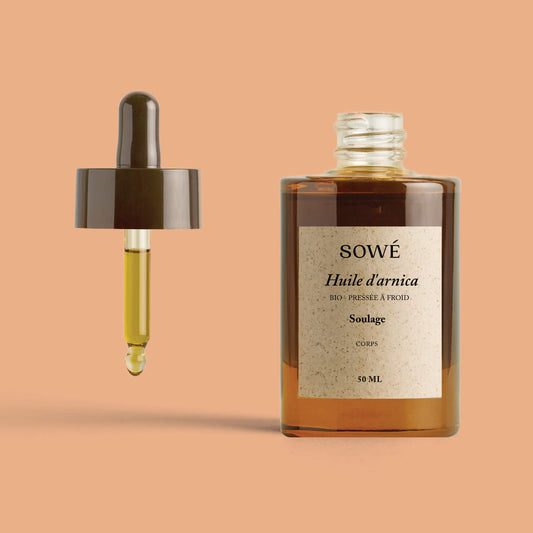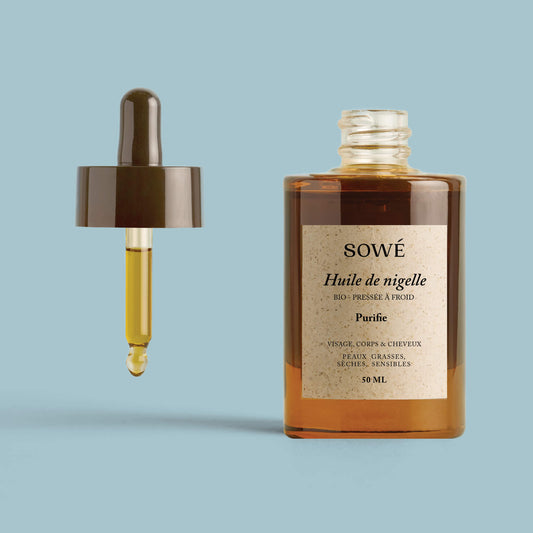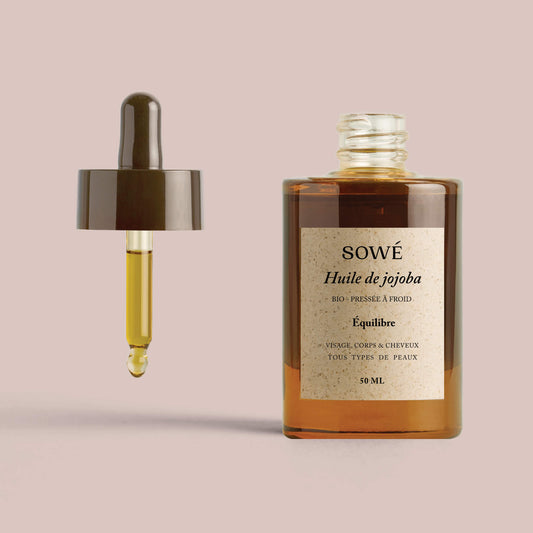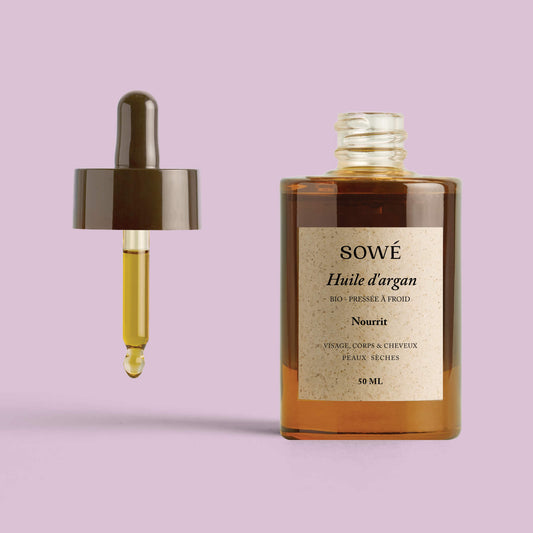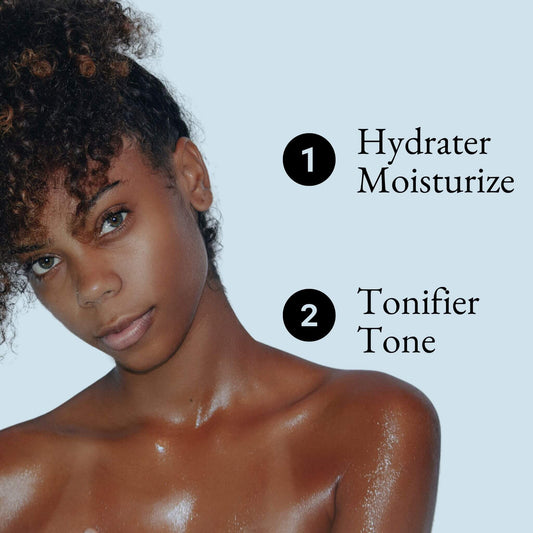The essentials of oils
There is often confusion about essential oils.
- Are essential oils toxic?
- Can you apply essential oils to the skin?
- Why is an oil called essential?
- Can you ingest an essential oil?
- Are essential oils dangerous?
A lot of questions that we will try to clarify
The use of aromatic plants - the birth of aromatherapy
Aromatherapy defines the method of care using essential oils. It is a holistic therapy because this method takes into account the whole individual; it is also characterised as alternative medicine.
The use of aromatic plants dates back long before Jesus Christ. For example, the Indian culture known as Ayurveda is a good example. The discovery in Mesopotamia of tablets dating back to 4000 BCE mentioning the use of aromatic plants is another example.
The Egyptians, Greeks, and Romans all used them, but it was the Arabs who perfected distillation techniques and seem to be the inventors of what we now call aromatherapy. Alchemists perpetuated their use in their raw form or in formulas diluted in alcohol; the Water of the Carmes, the Vinegar of the Four Thieves, and Fioravanti's alcoholate are famous examples, some of which are still available in pharmacies today.
Eager for his work to be immediately useful, the researcher René-Maurice Gattefossé develops an antiseptic and anti-infectious product based on essential oils, which he names Salvol. He has it experimented with by doctors in military hospitals, and then during the Spanish flu epidemic in 1918. It was in 1930 that he contributed to the establishment and scientific validation of essential oils.
What is an essential oil?
Essential oil is a plant extract typically obtained through steam distillation. It is a volatile substance: suspended molecules capable of moving through the air.
Essential oils come from large plant families. Among them, conifers are commonly used. Spruces, pines, cedars. Needles, buds, or bark are distilled from them.
The Apiaceae family is also very common: dill, anise, angelica, cumin, and coriander are renowned for their therapeutic benefits. Many other families such as Lamiaceae with thyme, lavender, sage, mint, Asteraceae, Cistaceae complement the long list of aromatic and beneficial plants that nature offers us.
Where do essential oils come from?
Not all plants produce essential oils, and those that do not necessarily store them in the same place.
Essential oils come from glands, pouches, or channels found in leaves, veins, bark, and seeds. For mint, it is by breaking the hairs on the leaves that the essences are released.
In the Landes region, the strong smell of pine comes from the cuts made in the bark of the trunks to extract the oleoresin, while the needles and leaves release a more airy, lighter scent that perfumes the forest.
In certain plants, the organs containing these precious essences can be multiple. They can be found in the leaves, flowers, barks, flowering plants, berries, peels, rhizomes, wood, needles and pine cones, nuts, and resins.
Why use an essential oil?
The action of essential oils is not only about their scent and their use in perfuming a room or the skin. While most people think that the power of essential oils is limited to their anti-infectious properties, their spectrum is actually much broader: Aromatherapy entrusts them with anti-inflammatory, antispasmodic virtues, and they can relieve stress, promote sleep, alleviate muscle and joint pain, boost immunity, improve digestion, and more.
What is the difference between essential oils and natural and synthetic fragrances?
A synthetic perfume is a fragrance created in a laboratory using artificial or synthetic compounds. These fragrances are designed to mimic the scent of natural ingredients and are often found in cosmetics, cleaning products, candles, and various household items.
Essential oils and natural perfumes are both derived from natural sources, but there are significant differences between the two.
Essential oils come directly from nature. They can be extracted from flowers, fruits, roots, spices, and many other sources through distillation and cold pressing. They are often used in aromatherapy and contain the natural fragrance and healing properties of the plant they come from. Due to their concentration, they are used in smaller quantities and diluted in water before use. On the other hand, natural perfumes often combine ingredients of plant origin, such as essential oils and plant extracts, with synthetic compounds to create the desired scent. They are often used in commercial perfumes and other scented products.
If essential oils are natural fragrances, not all natural fragrances are made from essential oils. Natural fragrances can be a mixture of natural materials and synthetic compounds, making them cheaper to produce.
How to use essential oils?
Our body can absorb essential oils through three pathways: skin, olfaction, and ingestion.
In all cases, essential oils are very potent and should be used with caution.
Skin
Essential oils are lipophilic and can penetrate the layers of the skin and pass through the microcirculation. Caution is necessary because oils are almost never applied undiluted.
They must first be diluted in a carrier oil: jojoba, argan, or hemp are among the best carrier oils for optimal skin hydration. Generally, for adults, a dilution of 5% essential oil in 95% carrier oil is recommended. For children over 6 years old, a maximum of 2% essential oil in carrier oil is recommended.
Before using a cosmetic product containing essential oils, it is important to test the product on a small area of skin to check for any allergic reactions.
Bathing, showering, or using a poultice are also good methods of application.
Oral
Never improvise as a therapist. The dosage of essential oils must adhere to certain guidelines and administration times.
Some oils are toxic in nature.
Respiratory
Once diffused into the air, these volatile molecules enter our bodies through the nostrils. Subsequently, these molecules pass through the lungs and into the bloodstream. The terpenes present in the oils are highly volatile, and their benefits are immediately felt. To diffuse the oils, there are electric pump diffusers available. Be cautious with heating diffusers as they may alter the oils. PS Have you ever tried diffusing one of our boosters? Immediate relaxation effect thanks to the lavender and petitgrain they contain.
It is important to note that essential oils are not medications and should not be used to replace medical treatment. If you are considering using essential oils to treat a medical condition, it is recommended to consult a qualified healthcare professional before starting any treatment.
What is the difference between vegetal oils and essential oils?
Vegetable oils and essential oils are two different types of oils. Vegetable oils are extracted from seeds, fruits, or nuts, while essential oils are concentrated extracts from aromatic plants.
Vegetable oils are fatty oils used for cooking, cosmetics, and skincare. They are rich in fatty acids and vitamins, possessing nourishing, protective, softening, and regenerative properties beneficial for the skin. Vegetable oils are also used as a base to dilute essential oils before topical application.
Essential oils, on the other hand, are concentrated extracts from aromatic plants used for their therapeutic properties and health benefits. Essential oils are used in aromatherapy to relieve stress, promote sleep, alleviate muscle and joint pain, boost immunity, improve digestion, and more. They are also used in perfumery, cosmetics, and the food industry.
In summary, vegetable oils and essential oils are two different types of oils with distinct properties and uses.
The quality of essential oils
There are several qualities of essential oils. The quality of an essential oil depends on various factors such as the plant variety, cultivation location, extraction method, storage method, etc. High-quality essential oils are 100% pure and natural, not mixed with perfumes or synthetic molecules.
The composition ofessential oils
An essential oil is a complex mixture of many chemical compounds, giving rise to structures that vary according to numerous criteria of the plant, such as location, climate, and plant adaptation. The same plant located in the plain will have different properties if it is located at altitude. It is said that they do not have the same "chemotype" (CT). Even if the human eye is not able to distinguish it, thyme with thymol CT, for example, does not have the same functions as thyme with carvacrol CT.
Essential oils are composed of the following elements.
The base, the terpenes
- Monoterpenes: pinene, limonene. Airborne anti-infective. Scots pine, many conifers, lemon, some citrus fruits.
- Sesquiterpenes: azulene, caryophyllene. Possible property: local calming, anti-inflammatory. Thyme, savory, mint, some chamomiles…
The constructions on the base
- Phenols: thymol, carcavol, eugenol. Anti-infective, powerful bactericide, fungicide, virucide. Thyme thymol, thyme carvacrol, clove…
- Monoterpene alcohols: linalool, geraniol, terpineol, menthol. Anti-infective. Lavender, thyme linalool, geranium…
- Aldehydes: citral, geraniol, neral, citronellal. Anti-infective. Possible property: anti-inflammatory, nervous system regulator. Lemon eucalyptus, neroli, petitgrain bigarade.
- Ketones: menthone, pulegone, carvone, thuyone, verbenone. Beware of Thuyone, very toxic. Caraway, rosemary verbenone…
- Diketones: italdione. Possible property: anticoagulant, healing.The everlasting.
- Esters: linalyl acetate, menthyl acetate. Possible property: antispasmodic, anti-inflammatory, nervous system balancer. Lavenders, mints, wintergreen…
- Oxides: 1,8 cineole, eucalyptol. Anti-infective. Possible properties: decongestant, expectorant. Eucalyptus globulus, ravintsara.
When to use essential oils
We remind you that French legislation grants only medical doctors the right to diagnose and treat diseases.
The elements presented here adhere to the respect of medical therapeutic protocols prescribed by doctors. Under no circumstances do they seek to replace them. The use of essential oils should bring about rapid and clear improvement. If not, medical consultation is essential.
Essential oils are very generally used for:
- Acne: Lavender, Ravintsara, Tea Tree... To be dissolved in a carrier oil and applied locally.
- Anxiety and stress: Lavender, Mandarin Petitgrain, European Basil. To be diffused or diluted in a carrier oil for application on the chest area.
- Arthritis: Scots Pine, Eucalyptus Citriodora, Wintergreen, Laurel... In a poultice with clay or diluted in a carrier oil for massage.
- Healing: Lavender, Cistus, Helichrysum... 1 drop on the area to be healed.
- Muscle aches and pains: Wintergreen, Cypress. To be diluted with a carrier oil and massaged.
- Itching: Thyme Linalool, Lavender, Eucalyptus Citriodora. To be diluted with a carrier oil and massaged.
They are also attributed with benefits for canker sores, bronchitis, bloating, burns, cellulite, stretch marks, cholesterol, blood circulation, constipation, bruises, sunburns, cuts, muscle aches, cystitis, depression, diarrhea, slow digestion, detoxification, sprains, bedsores, fatigue, fever, inflammations, bruises, hemorrhoids, herpes, lumbago, repelling insects, back pain, motion sickness, fungal infections, nausea, neuralgia, dandruff, insect bites, lice, prostate issues, rheumatism, the common cold, sleep problems, spasms, tendonitis, coughs, varicose veins, and warts.
In conclusion, essential oils
Nature is rich and benevolent. Plants are full of active ingredients that aromatherapy uses for many ailments. Essential oil appears to be an effective and natural way to treat many conditions, as well as to perfume oneself.
However, be careful, as some oils are toxic or caustic and cannot be used freely.
At SOWÉ, we only use chemotyped essential oil synergies derived from organic plants because we believe it is important to use only natural and organic ingredients in our products. Not only do they smell wonderfully, but they also offer numerous therapeutic benefits for our body and mind. It is important to be mindful of the fragrances we use and make healthier choices for ourselves and for the planet.
At SOWÉ, we use a range of essential oils for their therapeutic benefits. Essential oils such as neroli and sweet orange oil for their antioxidant properties, calendula for its soothing and softening properties, and lavender for its reparative, healing, and anti-inflammatory effects.
Sources
- Le petit livre des huiles essentielles, de Alessandra Moro Buronzo et de Jean Charles Schnebelen. F1rst Editions.
- Chae, H., Kwon, B. R., Lee, S., Moon, H.-B., & Choi, K. (2023). Adverse thyroid hormone and behavioral alterations induced by three frequently used synthetic musk compounds in embryo-larval zebrafish (danio rerio). Chemosphere, 324, 138273.
- Khan, A. D., & Alam, M. N. (2019). Cosmetics and their associated adverse effects: A Review. Journal of Applied Pharmaceutical Sciences and Research, 1–6.
- Patel, S. (2017). Fragrance Compounds: The wolves in sheep’s clothings. Medical Hypotheses, 102, 106–111.
- Sharmeen, J., Mahomoodally, F., Zengin, G., & Maggi, F. (2021). Essential oils as natural sources of fragrance compounds for cosmetics and cosmeceuticals. Molecules, 26(3), 666.
- Sharpe, R. M., & Irvine, D. S. (2004). How strong is the evidence of a link between environmental chemicals and adverse effects on human reproductive health? BMJ, 328(7437), 447–451.
- Tanu, B., & Harpreet, K. (2016). Benefits of essential oil. Journal of Chemical and Pharmaceutical Research, 8(6), 143–149.
- Vankar, P. S. (2004). Essential oils and fragrances from natural sources. Resonance, 9(4), 30–41.
- https://www.futura-sciences.com/sante/questions-reponses/divers-difference-huile-vegetale-huile-essentielle-6992/






